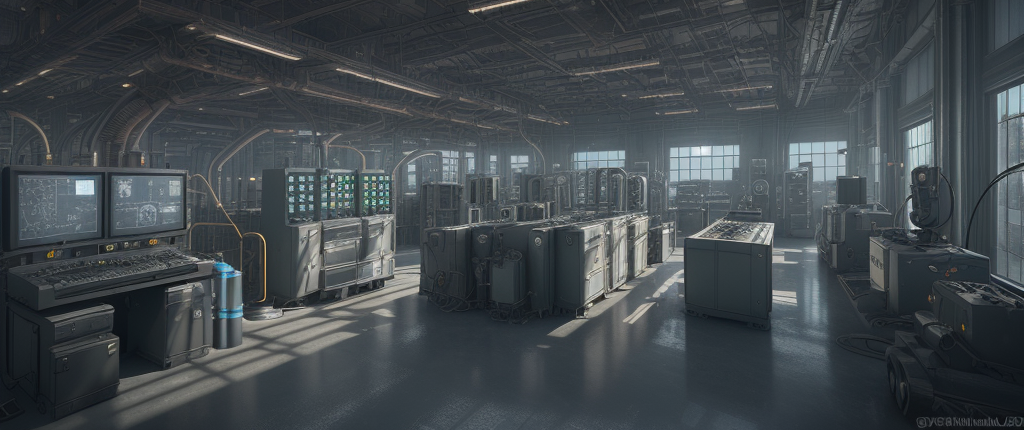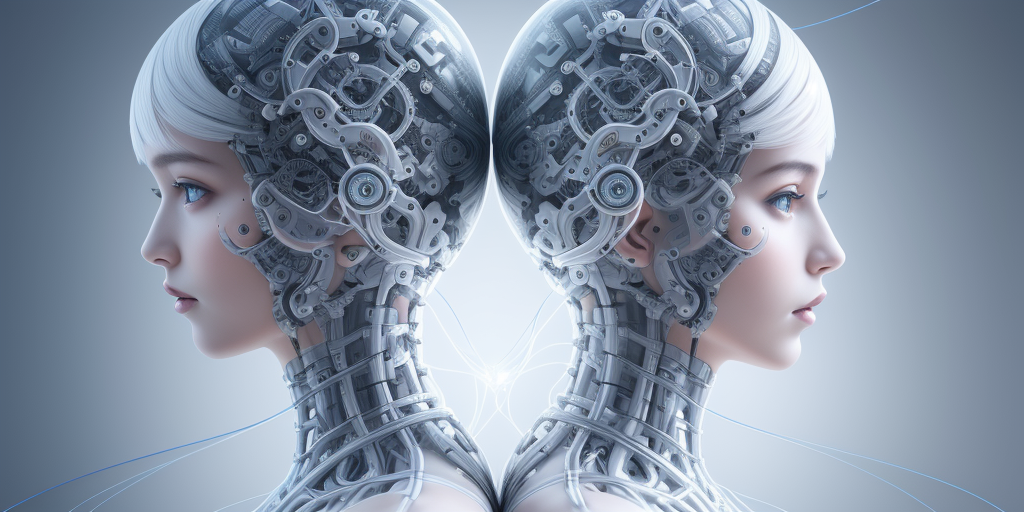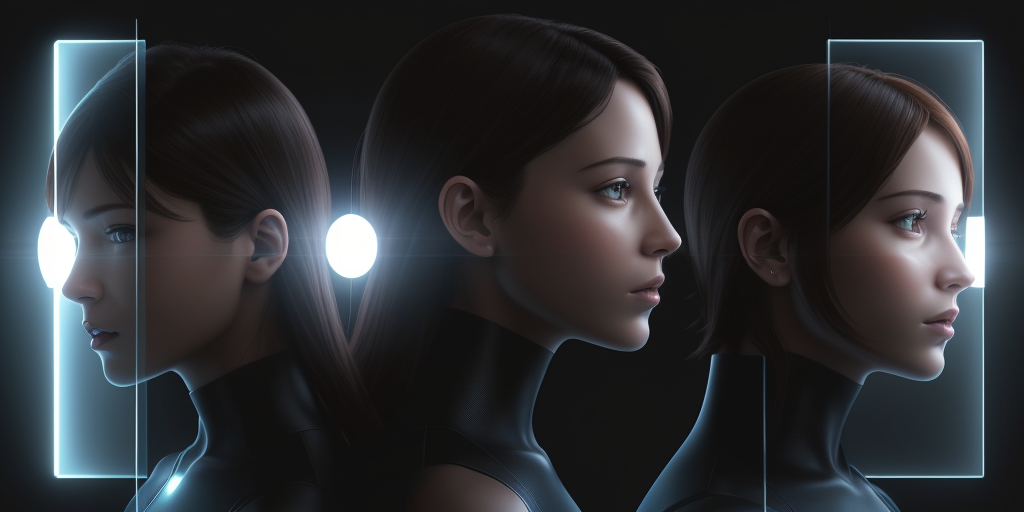In the rapidly evolving world of the computer industry and digital transformation, it’s easy to get lost in the jargon surrounding these devices. Two terms that often get thrown around in computer systems and devices are “Virtual Twin” and “Digital Twin”, both involving simulations. While they might sound similar, business systems have distinct differences and uses in various work industries. So, what exactly sets a Virtual Twin, a model example of simulations, apart from a Digital Twin that relies on data? Let’s delve into the nuances of data to clear up any potential confusion, using an example to help illustrate.
A Virtual Twin is a digital replica of a supply chain process or data-driven system, serving as an example of simulation for object purposes. On the other hand, a Digital Twin is a digital replica of a physical entity, for example, an object in a supply chain process, connected and updated with real-time data.
Intrigued by the world of digital replicas? As we delve deeper into the data, you’ll discover how twi and process help to set these two technological concepts apart, their real-world applications, and how they’re shaping our future. So, buckle up and prepare for an enlightening journey into the realm of Virtual and Digital Twins, where data and objects help streamline the supply chain. There’s so much more to learn!
In-Depth: Understanding Virtual Twins
What’s a Virtual Twin?
You’ve probably heard the term “Virtual Twin” floating around in data and tech circles, but what does this object really mean in terms of supply? Let’s dive into understanding this concept. So, what exactly is a Virtual Twin?
A Virtual Twin is a digital replica of a physical object or data system, used to analyze and optimize its performance in real-time.
It’s like the cool cousin of virtual reality. It’s a high-tech, digital model that mirrors a real-life product or data system, utilizing Twi. These twins are created using data to mimic the real-world version in every possible way.
Creation and Use of Virtual Twins
Creating a virtual twin involves:
- Gathering detailed data about the real-world object.
- Using this data to build an accurate digital replica.
- Regularly updating the digital model, often referred to as the virtual twin, with fresh data to reflect changes in its real-life counterpart is crucial in the lifecycle simulations of processes.
Virtual twins, a form of digital model, aid engineers in testing systems and products without requiring physical prototypes. They can run a simulation of how a manufacturing product will behave under various conditions, identify potential issues, and make necessary adjustments before anything becomes a reality.
Impact on Product Development and Testing
Simulation of virtual twins are game-changers for real-world product development and testing systems, for example.
- Virtual reality and simulation systems speed up the process by allowing for simultaneous design and testing in a virtual twin experience.
- Simulation systems minimize costs by reducing the need for physical prototypes, employing a virtual twin experience and model.
- Systems simulation in the supply chain process improves end products by enabling early identification of design flaws.
In short, supply chain simulation and virtual or hybrid twin technologies help bring better products to market faster.
Reducing Physical Prototyping
Imagine being able to run a simulation of a car that doesn’t exist yet or see how a new phone holds up after months of use – all without creating a single physical prototype! That’s what virtual twins offer. By simulating real-life scenarios, they save time, and money, and supply materials that would otherwise be spent on prototyping.
So there you have it! A sneak peek into the world of virtual twins and simulation – where reality meets innovation in ways that truly change life as we know it!
Exploring the Concept of Digital Twins
The Structure and Function of Digital Twins
Think of digital twins as dynamic software models that mimic physical things. They’re a key player in digital transformation, bridging the gap between real-world objects and their virtual counterparts. These twins are built on a 3D experience platform, which allows for innovation through simulation, testing, and design.
- Example: A digital twin of a car engine can help engineers test different modifications without touching an actual engine.

Data Analytics: The Brain Behind Digital Twins
Data management is crucial to digital twins. Sensors collect data from the physical world, then machine learning algorithms analyze this information to create accurate digital models. This collaboration between sensors and analytics makes it possible for digital twins to replicate real-world experiences.
- Project Example: In product design development, teams use data from customer usage patterns to improve their designs.
Importance of Real-Time Updates in Digital Twin Models
Digital twin technology isn’t static—it’s constantly evolving with real-time updates from its physical counterpart. This continuous feedback loop ensures that the model stays current with any changes happening in the real world.
- Work Scenario: If a sensor detects a change in temperature on an industrial machine, the digital twin will adjust its model accordingly.
Remember, understanding what sets apart a virtual twin from a digital twin is essential as we continue navigating our increasingly digitized world.
Key Differences: Virtual vs Digital Twins
Data Usage
Virtual and digital twins, though similar, use data differently. A virtual twin forms a virtual model of a physical product. It uses historical data to predict future performance in a virtual environment. On the other hand, a digital twin is a real-time digital replica of a physical object, using real-time data to mirror its state and condition.
- Virtual Twin: Uses historical data
- Digital Twin: Uses real-time data
Application Areas
Application areas for these technologies also differ:
- Virtual Twin:
- Design testing
- Product development
- Digital Twin:
- Real-time monitoring
- Maintenance prediction
A virtual twin excels in design testing and product development stages, while a digital twin shines in real-time monitoring and maintenance prediction.
Roles in Simulation vs Real-Time Monitoring
Finally, let’s distinguish their roles:
- Simulation (Virtual Twin): The virtual model simulates the performance of the physical product under various conditions.
- Real-Time Monitoring (Digital Twin): The digital replica provides an ongoing mirror image of the physical object’s operation.
Applications of Virtual Twins in Industry

Efficiency Improvements
Virtual twin technology is a game-changer for manufacturing industries. It enables simulations that mirror real-world processes, improving efficiency and product development. Here are some examples:
- A software company uses virtual twin technology to simulate their new product’s performance before launch.
- A manufacturing business utilizes virtual twin and hybrid twin simulation software to streamline its processes, reducing time and costs.
Cost Reductions
Predictive maintenance is another perk of virtual twin tech. Businesses can anticipate issues in their products or services and fix them ahead of time, saving a ton of cash. Check these out:
- A car manufacturer predicts potential faults in its vehicles using virtual twins, avoiding costly recalls.
- An IT service provider uses virtual twins to foresee server failures, preventing expensive downtime for clients.
Innovation Drive
Virtual twins aren’t just about cost savings; they’re also driving innovation. Companies use this tech to test new ideas without the risk or expense of real-world trials. Some case studies include:
- An apparel brand tests new designs using virtual twins before production.
- A food processing company simulates changes to their recipes with virtual twins, ensuring customers will love the taste.
Industry Implications of Digital Twins
Digital Twins and Industrial IoT
Digital twins are revolutionizing industrial Internet of Things (IoT) applications. They’re like a virtual mirror, reflecting the state of physical assets in real-time. Here’s how:
- Dassault Systèmes uses digital twin tech to simulate complex systems.
- Real-time monitoring reduces downtime in supply chains.
- Predictive maintenance is now a reality, thanks to digital twins.
Smart Manufacturing with Digital Twins
Imagine running an entire factory from your laptop. That’s the power of digital twins in smart manufacturing. They provide stakeholders with a complete overview of production processes, highlighting inefficiencies and bottlenecks.
For example, healthcare companies use digital twins to streamline drug production while minimizing waste.
Future Possibilities with Digital Twin Tech
The future looks bright for businesses adopting digital twin tech. Why? The possibilities are endless:
- Tailored customer experiences: Businesses can create personalized products using data from their customers’ digital twins.
- Enhanced decision-making: Companies can test different scenarios on their virtual twin before implementing changes in the real world.
- Sustainability: By optimizing resource usage through hybrid twin and virtual twin technologies, companies can reduce their environmental impact.
Metaverse vs Virtual Twin: Unraveling the Differences
Metaverse vs Virtual Twin
Let’s dive right into the topic: Metaverse and Virtual Twin. Both are buzzwords in the tech world, but what do they really mean and how do they differ?
Here’s a comparison table to give you a clear picture:
| Features | Metaverse | Virtual Twin |
| Space | Virtual reality space | Replicates real-life physical systems |
| Elements | AR, VR, and the internet | Human body, cities, large systems |
| Use | Interaction with environment and users | Research, management, and understanding |
| Examples | Social media platforms, online multiplayer games | Sumatosoft, COBIE |
Now, let’s talk about the way flow of world data in both:
- In the Metaverse, data flows between users and the virtual environment. Users can manipulate the environment, create their own experiences, and interact with others.
- In a Virtual Twin, data flows between the real and virtual systems. It’s used to predict outcomes, solve problems, and simulate scenarios before they happen in real life.
What about connected products and equipment?
- In the Metaverse, these could be VR headsets, AR glasses, or gaming consoles.
- In a Virtual Twin, it could be sensors on a physical system feeding data to the virtual model.
So, Metaverse or Virtual Twin? It’s not an either-or situation. They’re different tools for different purposes. But they both represent exciting developments in the world of tech.
Concluding Thoughts on Twin Technology
Let’s wrap this up, you’ve dived deep into the world of twin technology, exploring both virtual and digital twins. You’ve discovered that while they share similarities, they’re not quite two peas in a pod. Virtual twins excel in simulations and testing scenarios, making them superstars in industries like aerospace and automotive design. On the flip side, digital twins shine.
While hybrid twin and virtual twin have their unique strengths, remember that neither is inherently superior – it all boils down to what fits your business needs best. So go ahead, take the plunge and leverage these innovative twin technologies to level up your business operations.
And hey, don’t forget to keep learning about virtual twin and hybrid twin! The world of tech, including these twins, is always evolving – stay curious!



